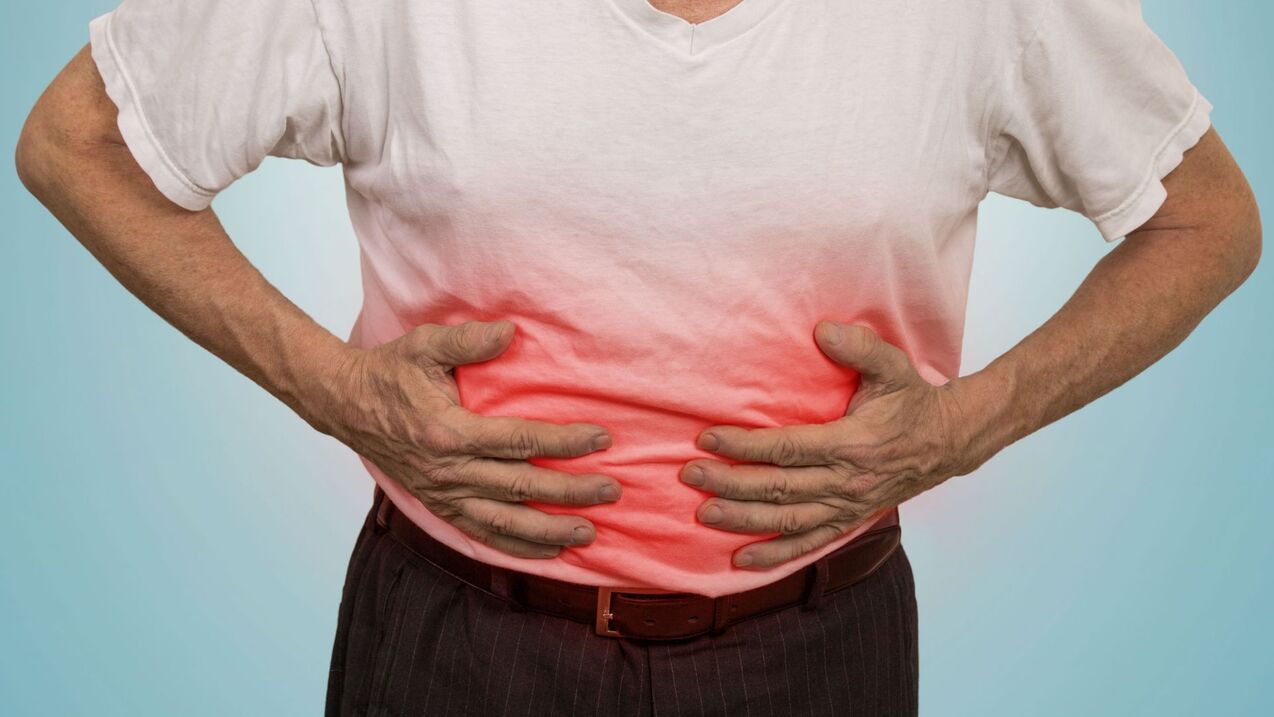
Pancreatitis is an inflammation of the pancreas. It produces enzymes that are involved in the breakdown of proteins, fats, and carbohydrates. It also makes insulin, which regulates blood sugar levels. Errors in nutrition, consumption of spicy and fatty foodsCraving, smoking and alcohol consumption, uncontrolled intake of drugs - all these factors provoke the development of pancreatitis.
How to identify pancreatitis and what diet patients should follow, we will tell in this article.
How do you know if you have pancreatitis?
Pancreatitis can be acute or chronic. Its symptoms vary depending on the form.
The acute form is expressed by severe back pain in the upper abdomen. Pain syndrome occurs when you have eaten something fatty or drank alcohol. Nausea and vomiting begin, there are problems with stool.
In chronic pancreatitis, the pain is localized at the top of the peritoneum, spreads to the back, left side of the chest, lower abdomen. Discomfort is observed against the background of consumption of fatty, heavy food, alcohol, as well as constant stress. She goes.
Symptoms of acute pancreatitis:
- Severe persistent pain all around.
- Increase in body temperature.
- Blood pressure rises.
- Yellow or yellow colour.
- Severe vomiting, no relief.
- Constipation, flatulence, salivation.
Symptoms of chronic pancreatitis:
- Abdominal pain after eating. Local or circular, extending to the back.
- Heat causes stomach ache, while cold gives relief.
- The patient takes a forced position - knee-elbow position, or a sitting position with forward bends.
- Vomiting, diarrhea
- weight loss.
It doesn't matter what type of disease you have - acute or chronic. You must be selective about your food and stick to your diet.
What diet is indicated for pancreatitis
For the prevention of exacerbation of pancreatitis, the following dietary modifications are recommended:
- eat 4-5 times a day with an even distribution of fat-containing foods in the diet;
- refusal to overeat;
- balanced diet;
- limiting saturated fat and cholesterol;
- inclusion in the diet of sufficient amounts of various types of vegetable fiber - cereals, vegetables and fruits;
- Eating a variety of foods that are low in saturated fat and cholesterol (unrefined vegetable fats are somewhat limited only in overweight people).
what products are allowed
It is a mistake to think that patients with pancreatitis are "deprived" of tasty and varied food. In fact, the list of allowed foods is quite extensive.
So, you can eat:
- Dry white bread, cookies.
- Vegetable soup with noodles, semolina, oatmeal.
- thin flesh.
- Lean fish, aspic.
- Oatmeal (buckwheat (pure), oatmeal, semolina, rice).
- Cheese, cereal puddings and casseroles.
- Milk and fermented milk products not more than 2% fat.
- Eggs.
- Vegetables.
- Ripe and non-acidic varieties of fruits and berries.
- Butter and vegetable oil.
- weak tea, still mineral water, rosehip broth, juice diluted with water in a ratio of 50 to 50).
It is necessary to wipe, boil, steam food. You can not eat hot and cold food. The optimum temperature is 30-50 ° C. Do not overeat, eat partially.
Which foods should be discarded?
An exacerbation occurs when there is a disturbance in nutrition and intake:
- fatty, fried foods,
- Garam Masala,
- A large number of raw vegetables, fruits,
- muffins and sweets (cakes, pies, pastries),
- Liquor,
- carbonated drinks,
- whole milk
Sample menu for patients with pancreatitis
- Breakfast: Milk porridge/milk soup with noodles/steamed noodles. Tea with milk. Happy bread.
- dinner: Vegetable Puree Soup, Boiled Rice/ Mashed Potato, Steamed Fish/ Meat. Tea.
- afternoon snack: curd casserole, jelly/jelly.
- dinner: vegetable salad with olive oil, boiled meat / fish, jelly.
Snacks are needed. Eat baked apples, low-fat cottage cheese, biscuits in between meals.
Note that medication and diet are equally important. Nutrition therapy brings the pancreas to a normal state, thereby avoiding aggravation of the disease. In this case, do not engage in self-treatment! If you have symptoms of pancreatitis, see your doctor.































































